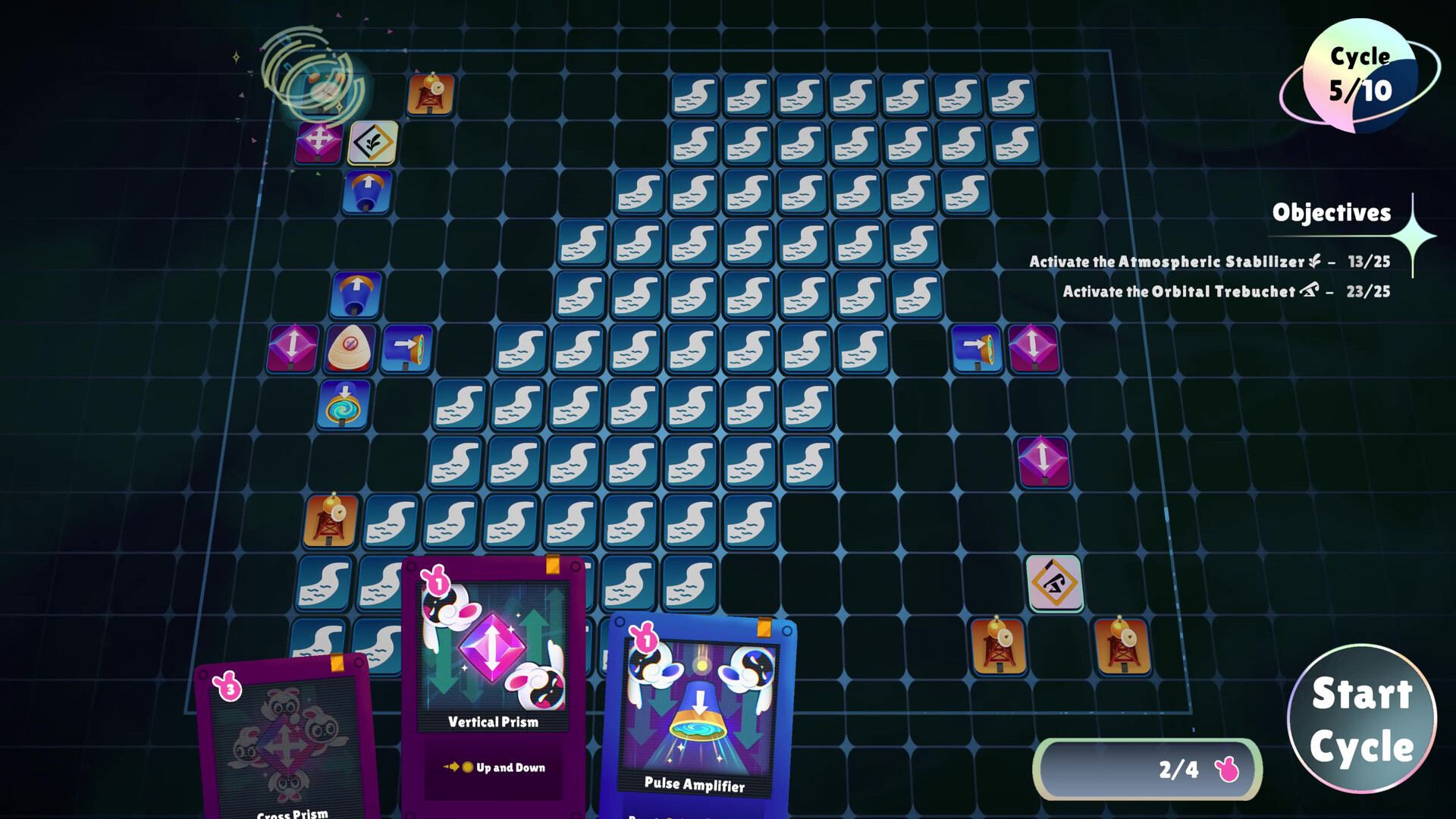Chants of Sennaar Walkthrough
Level 1: The Devotees
- Part 1 (Entering the Abbey)
- Devotee Glyphs: open, close, door, greetings, you, me, man, devotee, warrior, god, hide, seek, go
- Part 2 (Coin and Lens)
- Devotee Glyphs: up, not, free, preacher, death, plant
- Part 3 (Church and Cemetery Puzzles)
- Devotee Glyphs: key, pot, lens, potion, music, instrument, make, abbey, church, cemetery, garden, talk, help, love, see
- All Devotee Glyphs
Level 2: The Warriors
- Part 4 (Frontier – Disguise)
- Warrior Glyphs: warrior, not, love, death, wait, go, plural, protect, chosen, impure, carry, lay, push
- Part 5 (Observatory, Treasury)
- Warrior Glyphs: duty, weapon, trolley, fortress, treasure, call, help, seek, scientist (+ bottle, crate, small, big)
- Part 6 (Ringing the Bells)
- Warrior Glyphs: big, small, bottle, crate, vessel, instrument, balance, key, sun, moon, bellman, build, music, fear
- All Warrior Glyphs
Level 3: The Bards
- Part 7 (Bards’ Gardens, Fruits)
- Bard Glyphs: plural, warrior, go/pass, not, beauty, be, love/like, greetings, question, bard, weapon, have, idiot, you, me, seek, find, instrument, music, comedy
- Part 8 (Windmill, Games)
- Bard Glyphs: hammer, pliers, saw, play, ascend, fire, path, windmill, theater, agora
- Part 9 (Theater, Compass)
- Bard Glyphs: book, monster, brother, compass, north, east, south, west, man, free, abbey, fortress
- All Bard Glyphs
Level 4: The Alchemists
- Part 10 (Tunnels, Laboratories)
- Alchemist Glyphs: me, you, plural, find, seek, 1, 2, 3, 4, 5
- Part 11 (Library, Mines)
- Alchemist Glyphs: door, fairy, book, alchemist, bard, brother, gold, silver, copper, carbon, library, refectory, laboratory, mine, death, open, close
- Part 12 (Formula, Transforming)
- Alchemist Glyphs: not, warrior, plant, make, fire, help, 6, 7, 8, 9, 0, transformation, formula, monster, fear
- All Alchemist Glyphs
Chants of Sennaar may be an adventure and a puzzle, but it’s rooted in the mythology and linguistics of the real world.
What inspired the game’s story, and how do the languages of the game correspond to real-life languages? We take a deep dive.
How Chants of Sennaar derives from the Tower of Babel
According to developer Rundisc, Chants of Sennaar has been inspired by the myth of the Tower of Babel. This Biblical myth is found in the Book of Genesis and serves as a narrative explaining why people across the world speak different languages.
According to the myth, people on Earth once spoke a single language, and together they decided to build a city and a tower, with the tower being so tall that its tip would be in the heavens. When God discovered this construction, he chose to confuse the single language, so that they will be unable to understand each other – thereby becoming unable to finish the tower.
In much the same way, the various peoples of Chants of Sennaar speak different languages. They are unable to cooperate with or understand each other, leading to hostilities and misunderstandings. As the Traveler, the player helps undo this confusion and confront the entity that has caused the strife.
How the languages of Chants of Sennaar work
In real life, most languages used today, such as English, are written according to the pronunciations of their words. Therefore, the word ‘boy’ tells us how it is pronounced when read.
However, the languages in Chants of Sennaar are all logographic, which means that each written character or glyph represents a word directly. This is a feature found most famously in Chinese characters, which are also used in the Japanese language, where the character 人 represents ‘person’.

For this reason, we don’t know how the languages of Chants of Sennaar are actually pronounced (beyond a few sound bites), but we do indeed know what they mean and how they’re used. Of course, figuring out both of these aspects forms the basis of the game’s puzzles.
Another aspect common to all the languages of Chants of Sennaar is that they have no tenses. “I seek windmill” can also mean “I sought windmill”, or “I will seek windmill”. Indeed, they also do not have articles: the ‘a’ and ‘the’ words used in English. So is the speaker referring to ‘a windmill’ or ‘the windmill’? It’s up to the context.

The Devotees’ Language
The most unique aspect to the Devotees’ language is their handling of plural nouns. While other languages have a glyph specifically dedicated to turning a singular noun into plural, the Devotees’ language simply duplicates the singular noun’s glyph.
Want to describe plants in the multiple? A Devotee would inscribe ‘Plant-plant’.

In real life, this linguistic feature is found in the Malayo-Polynesian family of languages. In Malay, for example, one house is ‘rumah’, but multiple houses are ‘rumah-rumah’. Indonesian ‘kursi’ (“chair”) becomes ‘kursi-kursi’ in plural, i.e. “chairs”.
It’s worth noting that in Chants of Sennaar’s Devotees’ language, this reduplication extends even to pronouns! So a Devotee would say ‘we’ as ‘me-me’, and ‘you all’ as ‘you-you’.

The script used to write the Devotees’ language uses short and duplicated lines, giving it a loose resemblance to cuneiform. Developed in ancient Sumer (modern-day Iraq), cuneiform developed into many styles and was used to write languages like Sumerian, Akkadian, and Hittite.
Have a look at the Sumerian inscription below, dating back to circa 26th century BCE.

Cuneiform developed out of pictographs – early systems of writing where pictures represent an idea or a word. This is lightly reflected in the Devotees’ language as well. Notice how the glyph for ‘man’ resembles an upright person (perhaps wearing boots?). The glyph for ‘plant’ resembles a sapling sprouting from a seed, and the glyph for ‘death’ resembles the previously upright person lying horizontally on the ground.

The Warriors’ Language
Although the Warriors don’t reduplicate words to form plurals, their unique feature is also related to plurals. Specifically, they use their plural marker before the noun they are pluralising.
In English, we typically form plurals by adding an ‘s’ after the word. ‘Weapon’ becomes ‘weapons’, and ‘bottle’ becomes ‘bottles’. If English was written like the Warriors’ language, we would be writing ‘sweapon’ and ‘sbottle’ instead.

In real life, using prefixes to mark plurals is found in Bantu languages, which are spoken in southern, eastern, and central Africa. In the Zulu language, for example, one tree is ‘umuthi’, while multiple trees are ‘imithi’. In the Sesotho language, one python is ‘tlhware’, while multiple pythons are ‘ditlhware’.
The script used to write the Warriors’ language uses sharp angles and no curves whatsoever, which gives it a very strong resemblance to Runic alphabets, most notably the Elder Futhark, which is the oldest of the Runic alphabets.

Elder Futhark was used by Germanic peoples between the 1st and 8th centuries, and was used to write dialects based on Proto-Germanic and Proto-Norse languages. These days, they’re more famously associated with Vikings and Nordic mythology.
The Bards’ Language
The Bards use a plural glyph like the Warriors do, but they put it after the given noun, just as we do in English. However, their unique feature becomes quite apparent as soon as you talk to a Bard or find one of the Bards’ inscriptions.
The Bards’ language has a unique feature in that their word order is very different from the other languages (and from English).

English uses an SVO word order, which means that subjects come first, verbs come second, and objects come last. This is why “You seek windmill” is written with the verb ‘seek’ in the middle.
The Bards’ language uses an OSV word order – they mention the object first, then the subject, and then the verb. This means that in the Bards’ language, you would say “Windmill, you seek”.

In the real world, the OSV word order is considered to be the rarest, with the most popular being SOV and SVO. Languages that use the OSV word order are mainly concentrated in the Amazon basin of South America – such as Warao, which is spoken by some 32,800 people. Another language using this unusual word order is Tobati, which is spoken by only about a hundred people in Indonesia.
The script used to write the Bards’ language displays calligraphic curves and a horizontal line that connects the glyphs when the glyphs form a single word. These are hallmarks of North Indic writing systems just as Devanagari (used to write Hindi, Nepali, and Marathi), Gurmukhi, or Bengali.

Certain glyphs in the Bards’ language also bear a resemblance to the Arabic script – such as the glyph for ‘book’, and the many glyphs that have dot diacritics.
The Alchemists’ Language
The language of the Alchemists has no ‘special’ features unlike the others. It uses an SVO word order like English does and puts the plural glyph after the noun that is to be pluralized.

The script used to write the Alchemists’ language is complex, often using many strokes to form a single glyph. Furthermore, the strokes usually follow a pattern for words with similar meaning. Verbs, for instance, have an almost-complete ring around them; while places use a straight stroke and a curved stroke that combine on the left.
In real life, combining strokes into more complex glyphs based on meaning is a feature found famously in the Chinese writing system. Chinese characters were also adopted for use in the Japanese language.

The Anchorites’ Languages
The Anchorites’ language appears to be similar to the identical to the Alchemists’ language in terms of not having any special features.

The script used to write the Anchorites’ language uses sharp angles and straight lines with no curves whatsoever. This loosely resembles the runic glyphs of the Warriors, but like the Alchemists’ script, more advanced concepts are created by combining more ‘basic’ concepts in one glyph.
Thank you for reading this article! To learn more about the game itself, visit the official website here!
For other interesting coverage of indie games, be sure to check out the links below!





